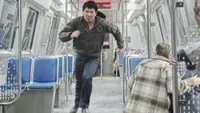Gambino (centre) helping her twin daughters, Giada (left) and Giuliana work on math worksheets as they go through homework from school in their home in Spring, Texas. — AP
ON a breezy morning in South Seattle, United States, a dozen elementary-aged students ran math relays behind an elementary school.
One by one, they raced to a table, where they scribbled answers to multiplication questions before sprinting back to high-five their teammate. These students are part of a summer programme run by the non-profit School Connect Washington, designed to help them catch up on math and literacy skills lost during the pandemic.
Already a subscriber? Log in
Save 30% OFF The Star Digital Access
Cancel anytime. Ad-free. Unlimited access with perks.





